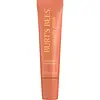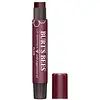What's inside
What's inside
 Key Ingredients
Key Ingredients

 Benefits
Benefits

 Concerns
Concerns

 Ingredients Side-by-side
Ingredients Side-by-side

Oleic/Linoleic/Linolenic Polyglycerides
EmollientPrunus Amygdalus Dulcis Oil
Skin ConditioningSqualane
EmollientPolyhydroxystearic Acid
EmulsifyingRicinus Communis Seed Oil
MaskingAroma
Limnanthes Alba Seed Oil
Skin ConditioningJojoba Esters
EmollientTetrahexyldecyl Ascorbate
AntioxidantBeeswax
Emulsion StabilisingSodium Hyaluronate
HumectantHydrogenated Castor Oil
EmollientTocopherol
AntioxidantRebaudioside A
Skin ConditioningGlycine Soja Oil
EmollientBenzyl Cinnamate
PerfumingCitral
PerfumingCitronellol
PerfumingGeraniol
PerfumingLimonene
PerfumingLinalool
PerfumingBenzyl Benzoate
AntimicrobialMica
Cosmetic ColorantTitanium Dioxide
Cosmetic ColorantCI 75470
Cosmetic ColorantIron Oxides
Oleic/Linoleic/Linolenic Polyglycerides, Prunus Amygdalus Dulcis Oil, Squalane, Polyhydroxystearic Acid, Ricinus Communis Seed Oil, Aroma, Limnanthes Alba Seed Oil, Jojoba Esters, Tetrahexyldecyl Ascorbate, Beeswax, Sodium Hyaluronate, Hydrogenated Castor Oil, Tocopherol, Rebaudioside A, Glycine Soja Oil, Benzyl Cinnamate, Citral, Citronellol, Geraniol, Limonene, Linalool, Benzyl Benzoate, Mica, Titanium Dioxide, CI 75470, Iron Oxides
Ricinus Communis Seed Oil
MaskingHelianthus Annuus Seed Oil
EmollientBeeswax
Emulsion StabilisingEuphorbia Cerifera Wax
Mentha Piperita Oil
MaskingLanolin
EmollientTheobroma Cacao Seed Butter
EmollientCopernicia Cerifera Wax
Butyrospermum Parkii Butter
Skin ConditioningFragaria Ananassa Seed Oil
AntioxidantPrunus Armeniaca Kernel Oil
MaskingRibes Nigrum Seed Oil
EmollientRosmarinus Officinalis Leaf Extract
AntimicrobialSambucus Nigra Seed Oil
Tocopherol
AntioxidantCanola Oil
EmollientGlycine Soja Oil
EmollientTin Oxide
AbrasiveMica
Cosmetic ColorantIron Oxides
CI 75470
Cosmetic ColorantAlumina
AbrasiveTitanium Dioxide
Cosmetic ColorantRicinus Communis Seed Oil, Helianthus Annuus Seed Oil, Beeswax, Euphorbia Cerifera Wax, Mentha Piperita Oil, Lanolin, Theobroma Cacao Seed Butter, Copernicia Cerifera Wax, Butyrospermum Parkii Butter, Fragaria Ananassa Seed Oil, Prunus Armeniaca Kernel Oil, Ribes Nigrum Seed Oil, Rosmarinus Officinalis Leaf Extract, Sambucus Nigra Seed Oil, Tocopherol, Canola Oil, Glycine Soja Oil, Tin Oxide, Mica, Iron Oxides, CI 75470, Alumina, Titanium Dioxide
Ingredients Explained
These ingredients are found in both products.
Ingredients higher up in an ingredient list are typically present in a larger amount.
Beeswax is natural wax produced by honey bees and can be synthetically created. It consists mainly of fatty acid esters and long-chain alcohols.
In cosmetics, beeswax is a emollient. Due to its waxy structure, it creates a protective barrier. This barrier prevents water from evaporating off the skin.
This may not be a good ingredient for oily skin. We recommend speaking with a professional if you have concerns.
Beeswax cannot be removed with water, but can be taken off with an oil cleanser.
Beeswax is also antiseptic and contains vitamin A.
Learn more about BeeswaxCi 75470 is a bright-red pigment. It is AKA carmine.
Carmine is derived from insects such as the cochineal beetle. This ingredient has been used as a natural dye for over 2000 years.
Glycine Soja Oil comes from the soybean. Glycine Soja is native to eastern Asia.
Soybean oil is an emollient. It is rich in antioxidants and fatty acids including palmitic, stearic, oleic, and linoleic acids.
As an emollient, the fatty acids in soybean oil helps keep your skin soft and hydrated. It does so by creating a film on top that traps moisture in.
Soybean oil is also rich in vitamin E, a potent antioxidant. Vitamin E is also anti-inflammatory and provides a soothing effect.
Studies show soy may help fade hyperpigmentation from UVB. It does so by disrupting the melanin process from UVB induced skin inflammation.
This ingredient may not be malassezia folliculitis, or fungal-acne, safe.
Soybeans are rich in proteins and are part of the legume family. Foods made with soybeans include tofu, soymilk, edamame, miso, and soy sauce.
Learn more about Glycine Soja OilMica is a naturally occurring mineral used to add shimmer and color in cosmetics. It can also help improve the texture of a product or give it an opaque, white/silver color.
Serecite is the name for very fine but ragged grains of mica.
This ingredient is often coated with metal oxides like titanium dioxide. Trace amounts of heavy metals may be found in mica, but these metals are not harmful in our personal products.
Mica has been used since prehistoric times throughout the world. Ancient Egyptian, Indian, Greek, Roman, Aztec, and Chinese civilizations have used mica.
Learn more about MicaRicinus Communis Seed Oil is the INCI name for castor oil.
Castor Oil helps moisturize the skin. It is rich in a fatty acid called ricinoleic acid. This fatty acid helps prevent moisture loss on the skin. This helps keep your skin soft and hydrated. Ricinoleic acid also has anti-inflammatory and pain reducing properties.
Besides hydrating the skin, castor oil is also used to hydrate hair. By keeping the hair shaft moisturized, breakage is decreased. More studies are needed to show castor oil's effective on stimulating hair growth.
Castor oil is created by cold-pressing castor seeds and then purifying the oil with heat. It was used in Ancient Egypt as fuel in lamps and to help treat eye irritation.
The term 'fragrance' is not regulated in many countries. In many cases, it is up to the brand to define this term. For instance, many brands choose to label themselves as "fragrance-free" because they are not using synthetic fragrances. However, their products may still contain ingredients such as essential oils that are considered a fragrance.
Learn more about Ricinus Communis Seed OilTitanium dioxide is a mineral UV filter widely used in sunscreens and cosmetics.
It is one of only two UV filters officially classified as “mineral” by regulatory agencies, the other being zinc oxide.
Titanium dioxide provides broad-spectrum protection mostly in the UVB and UVAII range, with some protection in the UVAI range.
While its UVA protection isn’t as strong as zinc oxide’s, the difference is minor.
A common myth is that mineral UV filters reflect UV light. However, modern research shows titanium dioxide absorbs UV radiation like chemical filters (~95% absorption & 5% reflection).
Thanks to its non-irritating nature, titanium dioxide is suitable for sensitive, acne-prone, or redness-prone skin. It is unlikely to cause "eye sting" like other sunscreen ingredients.
A major drawback of this ingredient is its white cast and thick texture. This is why mineral sunscreens often leave a white cast and are less cosmetically elegant than chemical/hybrid sunscreens.
To improve white cast and spreadability, micronized or nano-sized titanium dioxide is often used.
There are ongoing concerns surrounding nano-titanium oxide's impact on marine ecosystems.
There is no conclusive evidence that any form of titanium oxide (or any other sunscreen ingredients) will cause harm to marine ecosystems or coral reefs. The science is still developing but many consumers are keeping a close eye on this issue.
Please note, many destinations have reef-safety sunscreen rules. For instance, the U.S. Virgin Islands advises all visitors to use non-nano mineral sunscreens.
Nano mineral sunscreens once raised safety concerns about absorption into skin.
Extensive research has shown that they do not penetrate healthy or damaged skin; they remain safely on the surface and the top layer of dead skin (stratum corneum).
You'll likely find titanium dioxide bundled with alumina, silica, or dimethicone. These ingredients help make titanium dioxide highly photostable; this prevents it from interacting with other formula components under UV light.
Learn more about Titanium DioxideTocopherol (also known as Vitamin E) is a common antioxidant used to help protect the skin from free-radicals and strengthen the skin barrier. It's also fat soluble - this means our skin is great at absorbing it.
Vitamin E also helps keep your natural skin lipids healthy. Your lipid skin barrier naturally consists of lipids, ceramides, and fatty acids. Vitamin E offers extra protection for your skin’s lipid barrier, keeping your skin healthy and nourished.
Another benefit is a bit of UV protection. Vitamin E helps reduce the damage caused by UVB rays. (It should not replace your sunscreen). Combining it with Vitamin C can decrease sunburned cells and hyperpigmentation after UV exposure.
You might have noticed Vitamin E + C often paired together. This is because it is great at stabilizing Vitamin C. Using the two together helps increase the effectiveness of both ingredients.
There are often claims that Vitamin E can reduce/prevent scarring, but these claims haven't been confirmed by scientific research.
Learn more about TocopherolThis ingredient is a combination of red, black, and yellow iron oxide pigments. This combination of colors is usually found in foundation, because it results in a "skin" color.